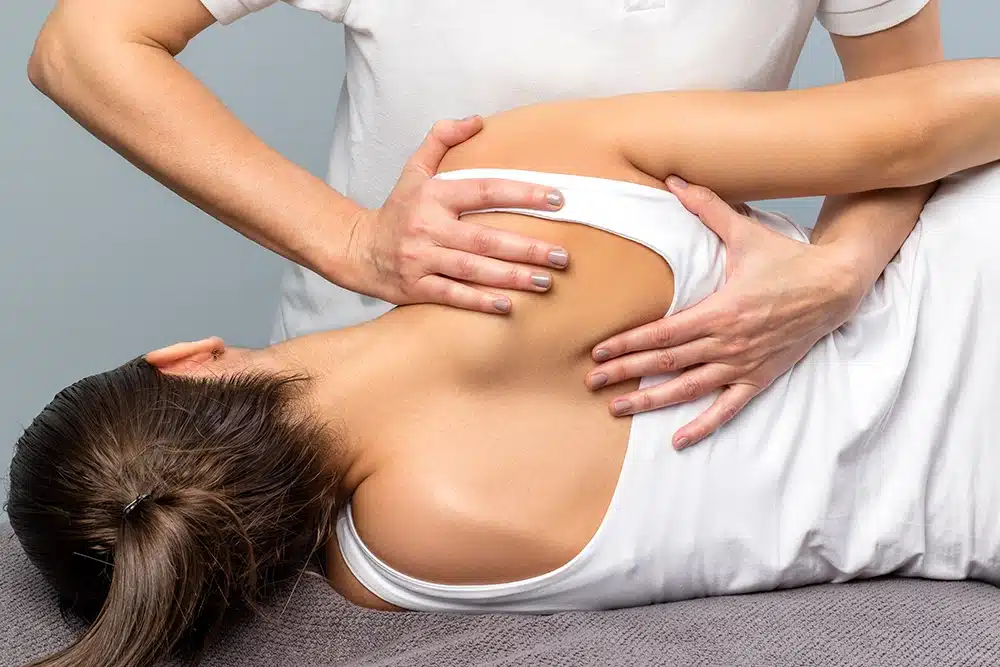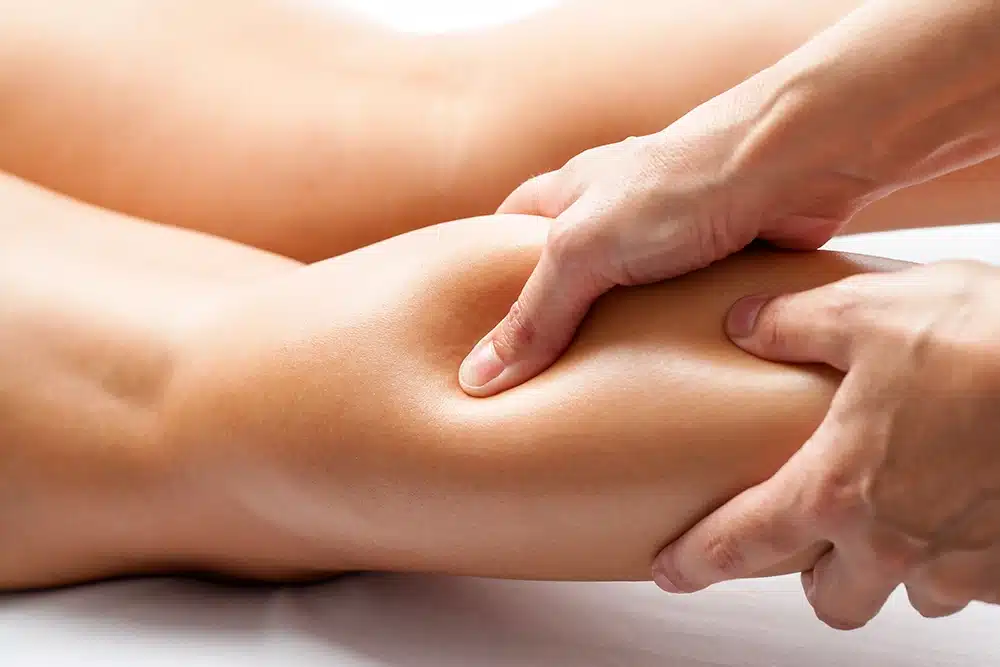TCM osteopathy uses a softer, more integrative approach based on traditional evaluation techniques and therapeutic touch, in contrast to typical Western osteopathy or chiropractic therapy, which frequently uses HVLA (High-Velocity Low-Amplitude) thrusts.
*This treatment is available at Liang Yi – Great World Clinic, provided by Physician Guo Feng.

TCM emphasises the healthy balance of blood, body structures, and Qi (vital energy) as part of its holistic approach to health. Manual Alignment Therapy, also known as TCM osteopathy or bone setting—is one of the specialty treatments offered by TCM. Without the use of harsh or high-impact methods, this therapeutic approach gently realigns the body’s structure by fusing ancient wisdom with a sophisticated understanding of anatomy and biomechanics.
Fundamentally, TCM osteopathy is based on the knowledge that discomfort, limited movement, and compensatory strain elsewhere in the body might result from misaligned bones or imbalances in muscle tension. Clinically referred to as Manual Alignment Therapy, this approach is based on the idea that misaligned bones and unbalanced muscle tension can lead to persistent pain, limited mobility, and even systemic health problems because of a disruption in energy flow (Qi).
Although TCM bone setting is somewhat comparable to Western manual therapies, it differs in that it incorporates TCM diagnostic frameworks such as organ correlations, Qi dynamics, and meridian theory. A TCM physician with osteopathic training examines the patient’s complete constitution rather than just specific joint issues.
Every session starts with a comprehensive consultation. Your symptoms, medical history, and lifestyle choices will all be covered by the TCM practitioner. A thorough physical examination follows, which consists of:
This all-encompassing assessment assists the physician in identifying minor muscle imbalances and skeletal misalignments that might not be visible on routine medical imaging.
TCM osteopathy stays away from high-impact procedures like HVLA, which are used in Western osteopathic treatments and require quick, strong thrusts to correct joints. Rather, the correction is accomplished by:
By gently adjusting the bones back into their ideal position, the surrounding muscles are encouraged to relax and regain their equilibrium. Crucially, this technique does not produce the audible “crack” that is typically associated with chiropractic adjustments, which makes it appropriate for patients who might be sensitive to strong manipulations.
Despite its importance, fascia; the network of connective tissue, is treated independently in a procedure called fascia mobilisation. TCM osteopathy ensures a focused and efficient repair process by concentrating directly on the bones and muscles.
Misalignment is frequently the cause of musculoskeletal pain, particularly in the joints, hips, neck, and back. Without the use of drugs, realigning the structure lowers mechanical stress and provides natural pain relief.By gently drawing blood to the surface, Yu Quan Guan Cupping enhances circulation in the area that has been treated. This is beneficial:
It's particularly beneficial for athletes who overwork their muscles or those who lead sedentary lives.
Movement becomes limited when joints are misaligned. Smoother and more comprehensive mobility is made possible by TCM bone setting, which restores functioning joint mechanics.
Chronic bad posture brought on by structural abnormalities can make pain and exhaustion worse. These patterns are fixed at their source through manual alignment.
Muscles may overcompensate due to misaligned bones, resulting in persistent strain or tightness. Muscles can relax and perform better if alignment is restored.
Bone setting aids in restoring the ideal structural environment for healing in injury scenarios like sprains, strains, or repetitive stress illnesses.
Postural dysfunction can be brought on by regular movement patterns, inadequate ergonomics, or extended periods of sitting.
Particularly, pain that is made worse by movement or lessened by rest is referred to as mechanical neck and back discomfort.
Some joint pains, particularly those that affect the knees, hips, or shoulders as a result of joint stress or unequal weight distribution.
Non-arthritic stiffness in joints such as the spine, hip, or shoulder.
Chronic stress or recurrent injuries brought on by incorrect biomechanics are known as recurrent muscle strains.
Based on your presenting symptoms and general health constitution, a TCM physician will assess if this therapy is appropriate for you.
A thorough evaluation of your posture, muscle tone, and joint alignment follows a discussion of your symptoms at the beginning of the session. Hands-on, gentle adjustments are the method of treatment. Every motion is intentional and intended to bring your muscles and bones back into balance.
Absolutely not. Quick thrusts are not necessary for TCM bone setting, in contrast to HVLA corrections. The majority of patients say that the gentle treatments are calming. As your body adjusts, you may experience some slight pain afterwards, akin to muscular aches after exercise.
The severity of your illness, the length of time the misalignment has remained, and your general vigour all affect how many sessions you need. While chronic illnesses may necessitate continuous care, some acute instances may improve after one or two sessions.
In Singapore, registered TCM physicians can provide bone setting without a doctor’s referral. However, it’s advisable to consult with your insurance provider regarding coverage details.
Comfortable, loose attire is ideal. This enables for unrestricted movement and makes the assessment procedure easier for the clinician.
Only registered TCM physicians who have received specialized training in Manual Alignment Therapy and musculoskeletal diagnostics should perform this type of treatment. Their knowledge ensures both safety and efficacy.
Guo Feng is one of the physicians at Liang Yi - Great World Clinic who is qualified to offer this treatment. With a strong background in TCM and extensive training in structural realignment, Physician Guo supports musculoskeletal health and general well-being by combining individualised care with precise manual techniques.

At Liang Yi TCM, we provide TCM Osteopathy as part of our wellness therapy, and TCM treatments. If you would like to know more, feel free to contact us and we will be in touch soon.